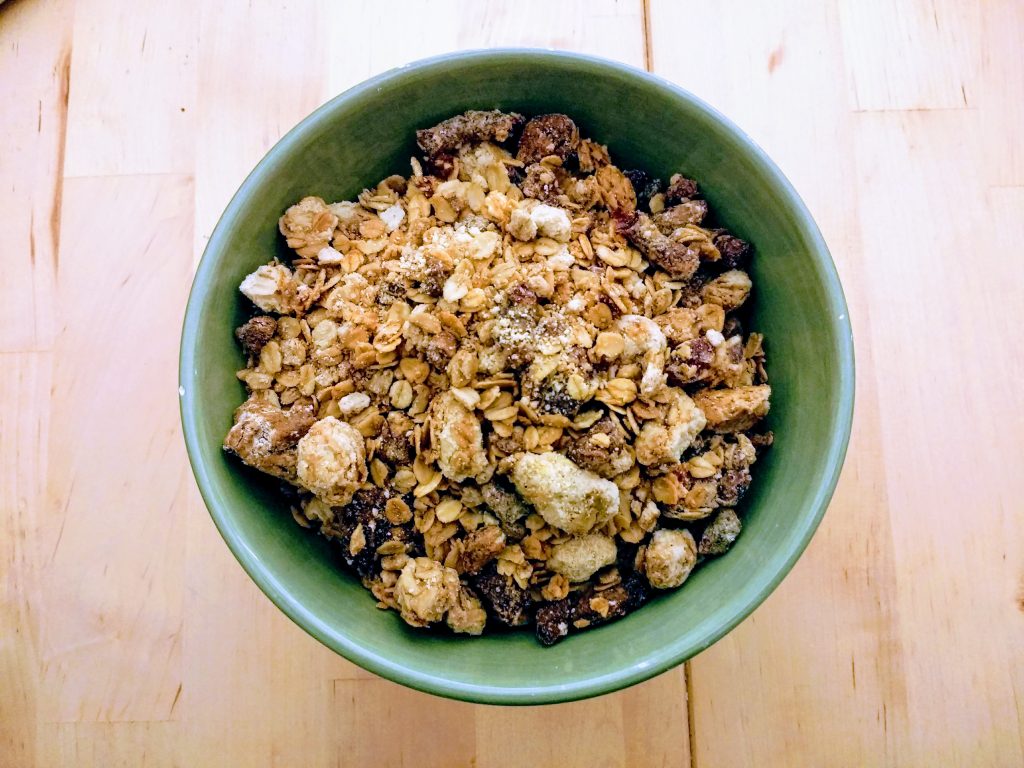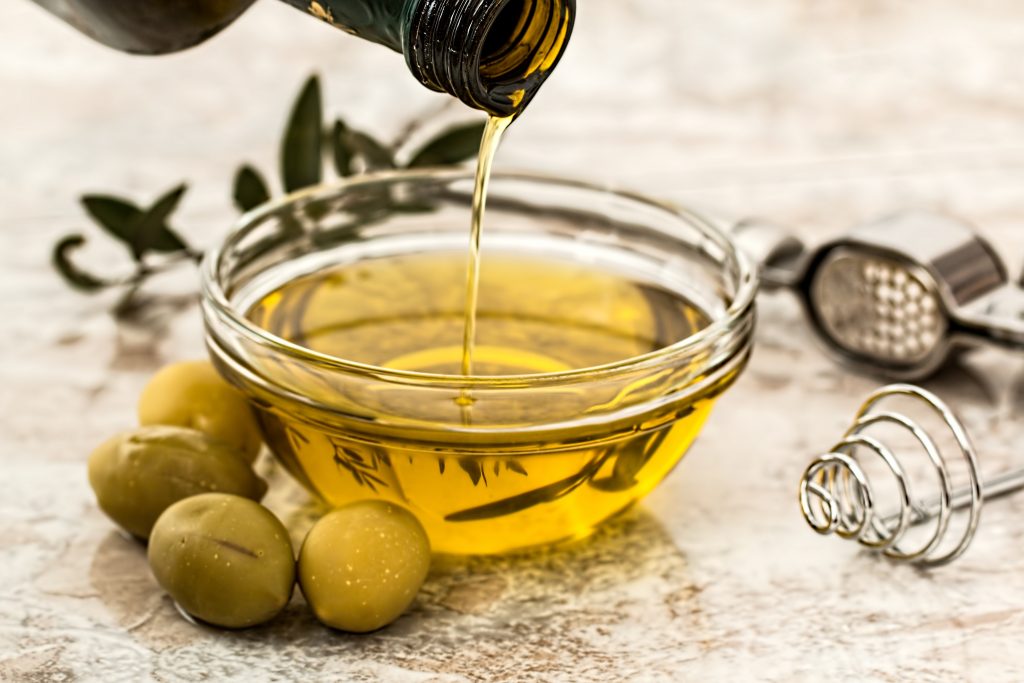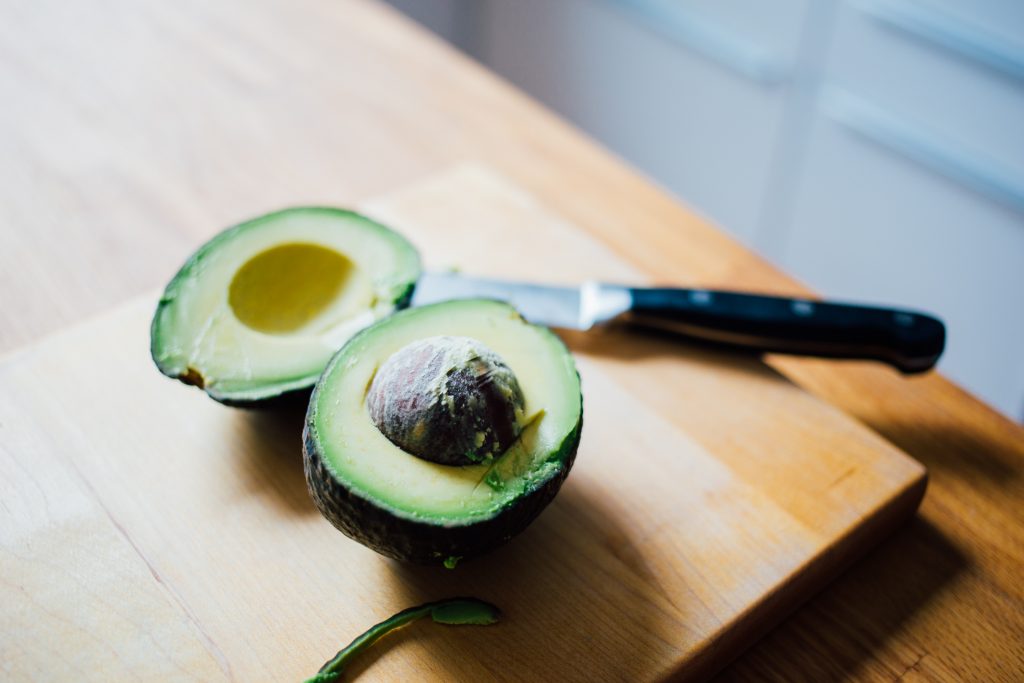
The ubiquity of advice articles claiming to know what foods runners should be eating or should not be eating is understandable. Running, like many athletic activities, is basically an exercise of input versus output. One of the most basic reasons many people run is to burn off excess calories, and those who run more and harder soon realize that what they eat and drink can affect how and how much they are able to run, recover, and ultimately enjoy life. So why wouldn’t runners, or even those who are thinking of running for the health benefits, want to know all the info they can about the healthiest runner’s diet? And why wouldn’t competitive runners, who feel like they’re still short of their best performance even after a big increase in training, want to learn about any extra edge they can obtain from altering something so essential as diet?
Yeah. I get it. I want to be my healthiest, too. I’m willing to consider how what I eat can either slow me down or speed me up. I believe I have fallen ill a couple times with season-stalling chest colds from not eating enough after some high stress workouts. I understand getting injured because of a lack of nutrition. I’ve felt sluggish when not eating well, and I’ve even gained significant weight while running, to the detriment of my running and thus enjoyment of life. I understand the impulse to not be left out of the next revelation in the healthiest runner’s diet or to glean the next performance edge and finally break that elusive PR. And what if the biggest benefit can come from the addition of one simple food to our diets? And what if that simple food tastes good? What if it tastes really good? I want to eat things that taste really good! And if they’re really good for me, and not complicated… Yeah, I understand the impulse.
But you know what I’m talking about. Diet articles directed at runners have adopted the marketing tactics of the larger health industry that pushes fad diets. Titles can be click bait, often consisting of a food craze coupled with intriguing imperative. A recent Runner’s World offering was titled “What Is a Gluten-Free Diet and Can It Hurt Your Performance?” The title is not Dr. Oz-y, but it’s funny that the article’s meta title takes a more objective journalistic tone, “What Is a Gluten-Free Diet and Can It Affect Your Performance?” Overall, it’s not a bad article, and there are more egregious offenders. You might have noticed that I haven’t offered any practical information about what the healthiest diet is for runners, or the healthiest diet that also encourages the best performance in runners. You might object that I haven’t offered any info about any diet and yet had suggested I would with the title of this post, exploiting the curiosity gap of readers and social media viewers who carry the understandable impulse to know how to eat healthier and run better. And your objection would be justified.
So let me get to the point: there is no healthiest runner’s diet. There’s especially no healthiest runner’s diet for best performance. The more sound scientific research done these days shows more and more how, while there are general dietary platitudes we ascribe to eating healthily, the best diet for any person is largely individual. Sure, taking protein after running is vital to prevent muscle breakdown. A lot of carbs for high mileage runners. Healthy fats. But the more we reproduce and evolve as a species we are clearly developing different dietary tendencies, tolerances, and aversions. Peanuts and peanut butter: super healthy for some, deadly for others. Soy: super healthy and tasty for some, suffocating for others. Olive oil: likely healthy for billions of people on this planet, debilitating for others. Yes, you read that right. Olive oil, even when used in moderation, with its monounsaturated fats and Omega-6s, can be awful for some people. I am one of those people.

What Isn’t Healthy
If you’re new to the blog, you might not know that I have sitosterolemia, a rare disease that prevents my body from properly processing phytosterols, a type of plant lipid. Basically, plant fats are bad for me. When I was undiagnosed and without treatment, these fats would collect in my blood and interact deleteriously with its contents. My main symptoms were anemia and thrombocytopenia. Others suffer strokes, just as someone with high cholesterol might. There have been about 100 of us in this world. You can learn more here.
What is considered healthy for the vast majority of adult humans on this planet is not necessarily healthy for me. The aforementioned peanuts and soy? Nope. Beans, they have healthy protein and fat, right? Not for me. What about avocado? Everyone can put avocado on anything, right, like California cuisine, you’re from California? Yes I am, and no I cannot. Broccoli? I prefer not to. In a way, these foods are poisonous for me. Even with treatment to counteract the plant fats in these foods, I prefer not to tempt fate and opt for foods low in phytosterols.
BUT VEGETABLES ARE SUPPOSED TO BE GOOD FOR YOU! I hear you clamoring dumbfounded. You don’t have to cite the latest foodie documentary or Michael Pollan book. I agree, vegetables are supposed to be good for us, but not all are for me.
I’ll let you take that in for a little bit as I get back to the runner’s diet. If I followed the advice of any of those articles on the healthiest runner’s diet, or any component or subsection of it, I would be doing my body a disservice. I could harm it. I could impact the quality of blood cells in my blood and thus not carry enough oxygen to run my best. I would not be my healthiest and I would not be eating for my best performance. I would be far from happy. My concerns are similar to other runners, especially competitive runners, in that I want to fuel the demands of the exercise I wish to undertake. I want to push myself faster, farther, and further than I ever have before, and I respect that I need to prepare as much with my training as with the nutrition my body craves to recover and perform. So, how do I eat to meet these demands if I must avoid what is considered healthy for most people? Where do I get my nutrients to stay healthy?
The best illustration of how my current particular diet continues to meet the demands of high performance running and keep me—relatively (knock on wood)—healthy could come from detailing how I ate before my diagnosis of sitosterolemia. I still ran reasonably well on my previous diet, before the effects of sitosterolemia intensified with age. Most of my current PRs I achieved while on that diet. It largely and regularly consisted of the following.
Breakfast
- 1 to 1.5 cups of whole milk plain yogurt
- about 2 cups of store-bought granola (oats, seeds, nuts, wheat clusters, berries, corn, etc.)
- maybe a banana or orange if I were still hungry
Lunch
- 1-2 bagels (usually anything but plain)
- a lot of salted peanut butter
- dash of honey
alternative: sandwhich of
- small chicken breast
- spinach (or other leafy green)
- sliced tomato
- a little shredded mozzarella
- 2 slices of whole wheat bread, or 1 sliced bagel
Dinner
- 2 to 2.5 cups of whole wheat pasta, doused with olive oil and spices
- vegetable medley (handful of green beans, chopped broccoli, spinach, etc.)
- chopped tomato
- chopped avocado
- large chicken breast or half pound of ground turkey cooked with olive or canola oil
Dessert
- if I went light on the pasta, 1-2 bagels toasted with butter and brown sugar
- otherwise, either a couple scoops of ice cream or as much of a dark chocolate bar as I wanted (depending on the season)
Day in and day out, that diet enabled me to run about 70 miles and bike commute about 60 miles per week. I’d mix it up from time to time, order special things when eating out, but otherwise the above was my routine. I was clearly trying to ensure that I was getting enough carbs for all the aerobic output I was asking of my body. I had learned in the past what was too much and had measured then, but stopped after I had learned what the right amounts looked like. Probably too much sugar in the granola, but not too bad overall. I also made sure to get a good amount of “healthy” fats and lean protein. And it tasted good enough to me! A pretty efficient and powerful diet—and ultimately very unhealthy, for me at least. Let’s see why.
Breakfast
- 1 to 1.5 cups of whole milk plain yogurt
- about 2 cups of store-bought granola (oats, seeds, nuts, wheat clusters, berries, corn, etc.) All contents are culprits for moderate to high levels of phytosterols.
- maybe a banana or orange if I were still hungry
Lunch
- 1-2 bagels (usually anything but plain) Likely made with some vegetable (canola) oil as a binding agent for the flour, high level of phytosterols. Seeds also high in phytosterols.
- a lot of salted peanut butter Peanuts are loaded with phytosterols.
- dash of honey
alternative: sandwhich of
- small chicken breast cooked with olive oil Olive oil has high levels of phytosterols.
- spinach (or other leafy green)
- sliced tomato Seeds in tomato could have moderate levels of phytosterols.
- a little shredded mozzarella
- 2 slices of whole wheat bread, or 1 sliced bagel Whole grains have moderate to high levels of phytosterols. Bagels, see above.
Dinner
- 2 to 2.5 cups of whole wheat pasta, doused with olive oil and spices Whole grains, olive oil, see above.
- vegetable medley (handful of green beans, chopped broccoli, spinach, etc.)
- chopped tomato Seeds in tomato, see above.
- chopped avocado Avocado, a fatty plant-based food, is high in phytosterols.
- large chicken breast or half pound of ground turkey cooked with olive or canola oil Canola oil, pretty much the same hazard as olive oil. All plant-based oils, really.
Dessert
- if I went light on the pasta, 1-2 bagels toasted with butter and brown sugar Bagels, see above.
- otherwise, either a couple scoops of ice cream or as much of a dark chocolate bar as I wanted (depending on the season) Chocolate has high levels of phytosterols. The more the cacao, the more phytosterols.
With every meal of the day, I was assaulting my body with phytosterols. At some point, it all became too much, and my body became relatively saturated with them, and moderate anemia settled in. Moderate anemia is not a big deal for someone who wishes to drive to work, to the store, and to home and live a comfortable consumer’s life. But for a runner, it is a veritable death sentence.

What Is Healthy
Just like patients with very high cholesterol, who have to watch what they eat in addition to taking preventative medication, sitosterolemia patients must also change their diets. Cholesterol is pretty easy to remove from your diet, if you are committed. Just adopt a plant-based diet, eat lean proteins, and be good to the liver (i.e. limit alcohol and fat intake). You’d still get to eat plenty of great, fun, tasty foods. Phytosterols, however, are harder to remove, since they’re in almost anything plant-based. Some plant-based products are higher in phytosterols than others, and for the vast majority of people, having more phytosterols in your diet is likely healthy. And it just so happens that some of the healthiest plant-based foodstuffs are also the ones highest in phytosterols. Because I needed to remove phytosterols from my system so that I would no longer be anemic so that I could run more again, I needed to make some big changes to my “healthy” diet above. One paradigm shift provided the biggest benefit.
If plant-based is bad for me, then animal-based is good. In fact, animal-based food is great! Animal products don’t contain phytosterols at all. They contain cholesterol, sometimes in high concentrations, but the medication I take to thwart the absorption of phytosterols also has the same effect on cholesterol. If “healthy” fats from oils and nuts were out, then fats from butter and yogurt and cheese and sausages were in—big time. Butter, cheese, meat? Healthy fats for me! Lard? Sure, but that’s kind of gross. Bacon fat? Absolutely! Mmm, bacon.
But what about the carbs and fiber from the pasta and granola? Granola, no replacement there. Sad to see you go, but good riddance! And if whole wheat is bad, highly processed white wheat, with the endosperm and germ removed, is good. White wheat combined with butter and yogurt for other nutrients—even better. White wheat pasta? Absolutely!
And what about vegetables, do you eat no vegetables anymore? That can’t be healthy! You’re right, and I agree; however, I am very selective with vegetables. I’ve done a lot of research on the phytosterol content of foods, and it is generally true that the more structured the plant-based food item, the higher the phytosterol content—like avocado or broccoli. The less structured, the lower the phytosterol content—like leafy greens, the phytosterol content of which is also easier to lower through cooking, since their structure is less stubborn.

The Healthiest Runner’s Diet for Best Performance
Let’s take a look at my diet now to see the changes.
Breakfast
- 1 to 1.5 cups of non-fat, plain greek yogurt
- handful of Irish soda bread, made with heavy butter, heavy buttermilk, and white wheat flour by my lovely wife
- maybe a banana if still hungry
Lunch
- 2 medium russet potatoes, baked or microwaved, with 2 oz of cheddar cheese
1 chicken sausage
alternative: swap out sausage for
- 2-3 scrambled eggs, cooked with butter
Dinner
- 2-2.5 cups of white wheat pasta, seasoned to satisfaction with grated Parmesan cheese
- large chicken breast, seasoned with rosemary
- 6 or more oz of kale or spinach or both.
alternative: swap out chicken breast for
- 2 chicken sausages or some other untreated meat source
- swap out pasta for 1-2 large baked russet potatoes and 4 oz of cheddar cheese
Dessert
- 2 apple cookies, made with white wheat flour, butter, buttermilk, coconut sugar, apple sauce, and apples by my lovely wife
- 1 cup of whole milk plain yogurt
A diet very low in phytosterols and yet still rich in healthy fats, protein, carbohydrates, fiber, vitamins, etc. Maybe you caught something I’ve glossed over. I’ll feature it in another blog post, but the potato has been a magical food for me. Kind of a plant, kind of a root, has as many if not more nutrients than a lot of plant-based foodstuffs, unrefined carbs that match quantities in wheat or quinoa—and the russet variety has practically zero phytosterols. I’ll sing the praises of potatoes in another post, but suffice to say I’m still getting a good amount of nutrients I otherwise used to get from plant-based foods high in phytosterols. And sure, I mix it up from time to time, but more with animal-based foods (mmm, bacon). Any new plant-based item is vetted heavily before introduced into the mix.
Yes, the diet above is a healthy diet, healthy for a particular runner. It also is a great diet that enables better running performance, for a particular competitive runner. I lowered my blood’s phytosterol count by 50 fold on this diet. I went from an 18:03 5K to a 17:00 flat 5K in 3 months on this diet. I went from jogger and gasper relegated to finding challenge and fulfillment at the gym squat rack to a sub-1:15 half-marathoner and sub-2:45 marathoner in my first attempts at the distances in 6 months on this diet.
Is a Low Phytosterol Diet for Me?
The above diet will not be healthy for everyone. In fact, its restrictions are highly likely not necessary for you. Also, it will not help properly fuel every ambitious runner out there, but neither will all the other articles in “The Healthiest Runner’s Diet for Best Performance” genre. I suggest that you don’t take your advice directly from any one diet article or blog but that you do your own research on healthy eating for runners, using many resources. There are some great deep dives into the subject in books like Lore of Running by Tim Noakes or ROAR co-written by Stacy Sims. Learn what elite runners are eating and why, since they either have culled some great performance-specific information on diet throughout their career or work with niche nutritionists for athletes. No one has a monopoly on credibility, though, when it comes to diet and running, and scientific knowledge on the subject advances little bit by little bit, so seek out many sources to keep adding morsels of dietary knowledge to your growing understanding of diet, health, running, and performance.
To enhance your running performance and enjoy your running to the fullest, ultimately you have to take ownership of the particulars of your unique body and the diet ideal for it. I’ll write more later on various dietary philosophies, especially those applied to endurance athletes, and which I’ve found helpful and generally valid through my own journey with sitosterolemia. In the meantime, keep eating, keep running, and thanks for reading.